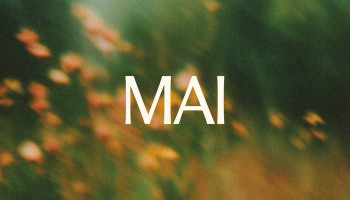
Generating images from a simple word prompt is one of the most well-known applications of generative artificial intelligence, and there are dozens of AI image generators on the market that provide an equally diverse set of settings, features, and styles.
Users progressed from technologies like Midjourney, which could generate a low-resolution, hardly recognisable portrayal of a human, to high-resolution, photorealistic photos that are indistinguishable from those captured with a camera.
In addition, users now have text on pictures from OpenAI in DALL-E 3 and Ideogram, the AI company founded by former Google engineers, along with inpainting, constant character, and upscaling capabilities from StabilityAI, which are widely used by businesses like Leonardo and NightCafe.
Best AI image generator overall
Leonardo
Leonardo is a very effective wrapper for a range of stable diffusion models, similar to many other models in the same class, but it goes much more than that. It distinguished itself in the field with personalised styles, optimised models, and additional AI image tools.
Moreover, it can produce a variety of styles using the Elements function, and its capacity to produce photorealistic photos, owing to the precisely calibrated PhotoReal model, is almost on par with Midjourney's.
Midjourney
Midjourney is among the most prominent and remarkable artificial intelligence picture creators on the market right now. It is not user-friendly, which is one of its many shortcomings, but what makes it more difficult to use also makes it more remarkable.
Some of the more skilled users can make it to produce photographs that appear to have been taken directly from a phone camera, demonstrating its exceptional ability to produce lifelike images. Midjourney always features individuals who appear natural, and they were among the first to solve the finger problem.
Ideogram
Ideogram is one of the user's preferred AI picture generators. Whereas, its feature set isn't the strongest, it can add text unlike any other model and responds to prompts quite effectively. I can create whole movie posters, fliers, and greeting cards with precise wording.
It is accessed through a very straightforward prompt box and is both strong and user-friendly, with the ability to automatically improve your prompt to obtain a better image.
Microsoft Copilot Designer (DALL-E 3)
While some picture generators, like Midjourney, are separate applications, others — like Microsoft's Designer, which is integrated into the Copilot chatbot — are part of other programmes. Without purchasing Copilot Pro, it is also free to use.
Microsoft's Designer is an outstanding creation, based on the same core DALL-E 3 technology as ChatGPT. It allows you to alter every part of the picture, even removing certain objects from it.
OpenAI ChatGPT (DALL-E 3)
DALL-E 3 is restricted to Plus account holders in ChatGPT. Within ChatGPT, DALL-E may be used in a few different ways. Simply tagging DALL-E in the main chat, using the DALL-E GPT special chatbot, or the main interface are the three ways to reach it.
Moreover, one of the first well-known, for-profit generative AI picture tools was the original DALL-E. OpenAI first made it available as an API or via a special DALL-E website, however, then combined it with their chatbot. Its capacity to communicate through images is also its main point of sale. Everything is generated using only plain language and is dependent on text prompts.
Google ImageFX
One of the greatest AI picture-generating models available is Google's Imagen 2. It can handle text on pictures as well as ideograms and produces interesting and unique graphics. There are a few ways to get there, however, Google Labs' ImageFX project is the most creative.
The intriguing thing about ImageFX is how it responds to prompts. When you provide it with a paragraph-long prompt, it identifies essential terms and converts them into drop-down menus. After that, each menu has three or four options that are comparable to the term you entered.
Adobe Firefly
One of Adobe Firefly's remarkable features is its training dataset, which is nearly entirely composed of images from Adobe Stock. It also offers significant customisation options for image production.
The latter factor indicates that Firefly has a higher ethical training set than the majority of image generators available on the market, which even led to Adobe providing financial indemnification against copyright claims about photos created with Firefly. Another generation of Fireflies is on the horizon.
Moreover, the Firefly model powers a variety of generative AI functions provided by Adobe, such as vector generation, template creation, and generative fill in Photoshop.
















